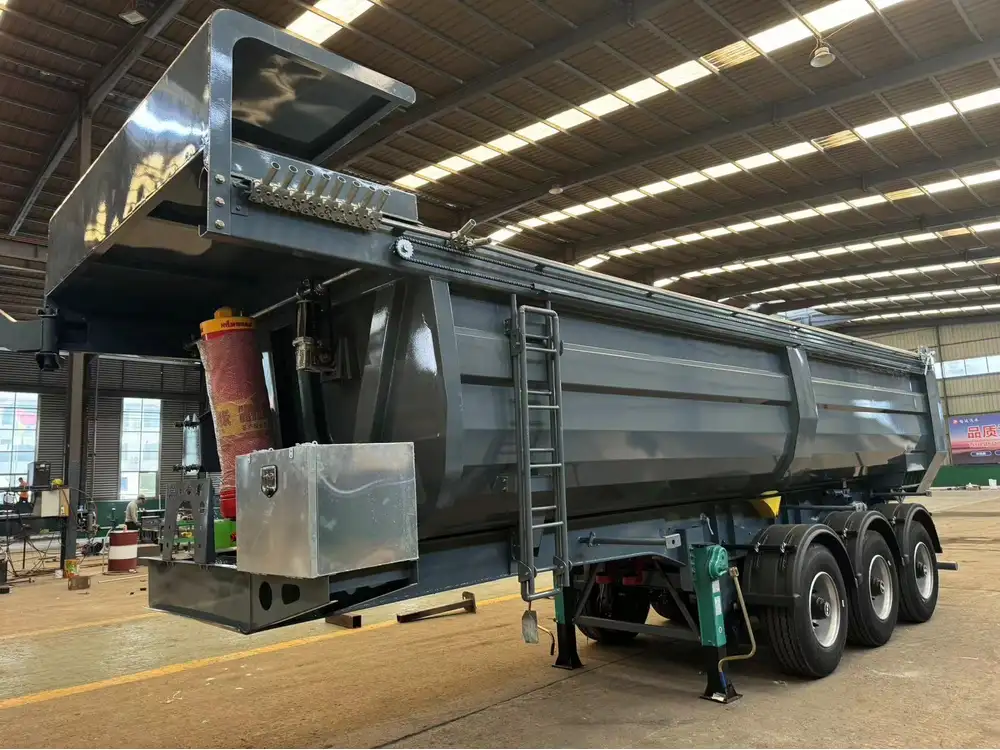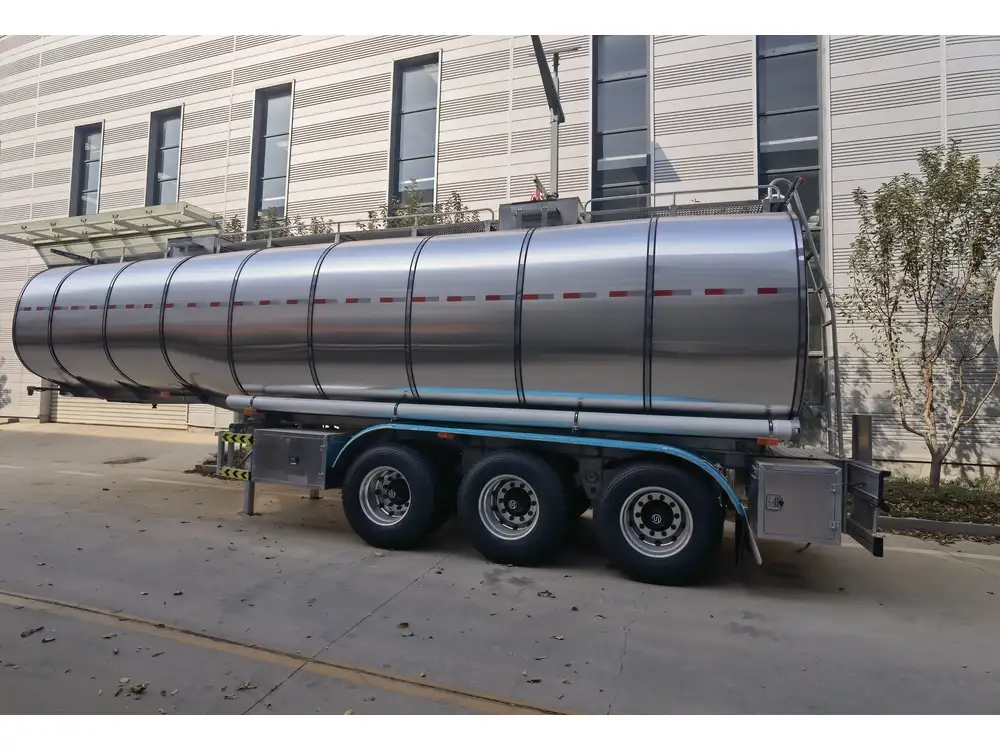When discussing commercial vehicles, particularly 18-wheelers, dimensions play a crucial role in logistics, route planning, and regulatory compliance. These large trucks, often seen on highways and interstates, are vital in transporting goods across vast distances. Understanding their dimensions, particularly width, is essential for both manufacturers and operators in the transport industry.
What is an 18-Wheeler?
An 18-wheeler, also commonly referred to as a semi-truck or tractor-trailer, is characterized by its combination of a tractor unit and one or more trailers. The nomenclature “18-wheeler” arises from its configuration, which includes a total of 18 wheels – 10 on the tractor and 8 on the trailer. These vehicles are engineered to handle heavy loads, adhere to strict safety standards, and navigate diverse environments.
Standard Width of an 18-Wheeler

Typical Dimensions
In the United States, the standard width of a standard 18-wheeler is approximately 102 inches, which translates to 8.5 feet. This width is crucial for ensuring that the vehicle complies with federal and state highway regulations, which mandate the maximum allowable width for trucks.
| Dimension | Measurement |
|---|---|
| Width | 102 inches (8.5 feet) |
| Height | Up to 13.5 feet (varies) |
| Length | Up to 45-53 feet (depending on trailer type) |
Width Variations and Types of Trailers
While the standard width is set at 102 inches, it’s essential to note that certain specialized trailers might have different dimensions:
- Flatbed Trailers: Typically maintain the standard width of 102 inches.
- Reefer Trailers: Refrigerated trailers also conform to the 102-inch width standard.
- Tanker Trailers: These might vary based on regulations but often stick to the standard width as well.
Legal Width Restrictions

Federal Guidelines
According to the Federal Highway Administration (FHWA), the maximum width for a commercial vehicle like an 18-wheeler is 102 inches on most highways. However, some states allow wider vehicles under specific conditions.
- California: Permits widths up to 108 inches for certain vehicles.
- Texas: Similar allowances, primarily for agricultural products and specialized transport.
Navigating these regulations is critical for ensuring smooth operations and avoiding hefty fines.
Route Planning
Before embarking on long hauls, operators often need to plan their routes meticulously. For example, narrow bridges, overpasses, and rural roads may have width restrictions that require alternative pathways for 18-wheelers.
Height Considerations for 18-Wheelers
While width is a primary concern, understanding height is equally vital. Most 18-wheelers have a maximum height of 13.5 feet. This measurement includes the cargo, so operators must account for the contents being transported.
| Height Regulation | Maximum Allowance |
|---|---|
| Federal Maximum | 13.5 feet |
| State-Specific Limits | Varies (e.g., 14 feet in some states) |
Just like width, height regulations serve to protect infrastructure, such as bridges and tunnels. Awareness of these dimensions aids in efficient logistical planning.

Why Width Matters in Transportation
Compatibility with Infrastructure
One of the core reasons the width of 18-wheelers is standardized relates to infrastructure compatibility. Roads, bridges, tunnels, and parking areas are designed with the standard width rule in mind. An oversized vehicle could pose safety risks, disrupt traffic flow, or cause structural damage.
Enhanced Stability and Maneuverability
With a width of 102 inches, 18-wheelers achieve a balanced design that enhances stability and maneuverability. Wider vehicles can provide better lateral stability, reducing the risk of rollovers during sharp turns or adverse weather conditions.

Load Distribution
The width of a truck also affects load distribution. A properly loaded and distributed load enhances safety and efficiency, contributing to optimal fuel consumption and reducing wear on the vehicle.
Challenges of Operating an 18-Wheeler
Maneuverability Constraints
Driving an 18-wheeler entails unique challenges, largely stemming from its size and weight. While width contributes to stability, it also requires careful maneuvering, particularly in urban or densely populated areas.
Turning Radii: The larger the vehicle, the wider the turning radius required. Drivers must anticipate turns and intersections to avoid obstacles.
Parking: Finding adequate parking can be an uphill battle; many areas lack sufficient space for these expansive vehicles.

Road Regulations and Restrictions
Operators of 18-wheelers must navigate numerous road regulations that can change by state or municipality. These regulations can affect:
- Travel Hours: Restrictions on when trucks can operate based on traffic conditions.
- Weight Limitations: Maximum allowable weights that can be transported, often dictated by the number of axles and total vehicle width.
| Regulatory Aspect | Impact on Operations |
|---|---|
| Width Restrictions | Determine permitted routes |
| Height Limits | Influences cargo types |
| Weight Limits | Affects load planning |
Seasonal Challenges
Seasonal changes can further complicate the operation of 18-wheelers. Ice, snow, and rain can alter road conditions, impacting the vehicle’s handling characteristics. Wider trucks may require additional caution to prevent skidding.
Innovations in Semi-Trailer and Truck Manufacturing
As the logistics landscape evolves, manufacturers are developing advanced designs and technologies to enhance the functionality and efficiency of 18-wheelers.

Aerodynamic Enhancements
Modern manufacturers focus on reducing air resistance to improve fuel efficiency. Streamlined designs and innovative materials help meet regulatory standards while also promoting environmental sustainability.
Smart Technology Integration
The rise of telematics and smart technologies is transforming how 18-wheelers operate. These tools provide real-time data on vehicle performance, helping drivers and fleet managers optimize routes and monitor vehicle conditions.
| Technological Advancement | Potential Benefits |
|---|---|
| Advanced GPS Systems | Improved navigation and planning |
| Real-Time Load Monitoring | Enhanced load management |
| Collision Avoidance Systems | Increased safety and reduced accidents |
Conclusion: Embracing Knowledge for Optimal Operations
Understanding the dimensions of an 18-wheeler, particularly its width, is fundamental for anyone involved in logistics, transportation, or fleet management. With a standard width of 102 inches, operators must remain cognizant of legal restrictions, infrastructure compatibility, and maneuverability constraints.
With the trucking industry rapidly evolving, continued awareness and adaptability will be key for manufacturers, operators, and regulators alike. Whether it be navigating the complex web of regulations or identifying technological advancements that enhance operational efficiency, knowledge truly is power in the world of transportation.
Ultimately, whether you are a fleet manager, driver, or logistics coordinator, gaining insight into the intricacies of vehicle dimensions can significantly improve operational success, ensuring that the journey from point A to point B is safe, efficient, and compliant with all relevant guidelines.



